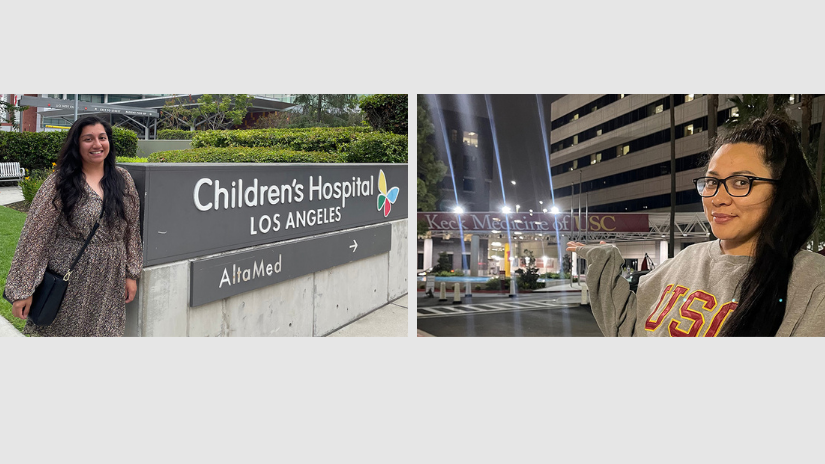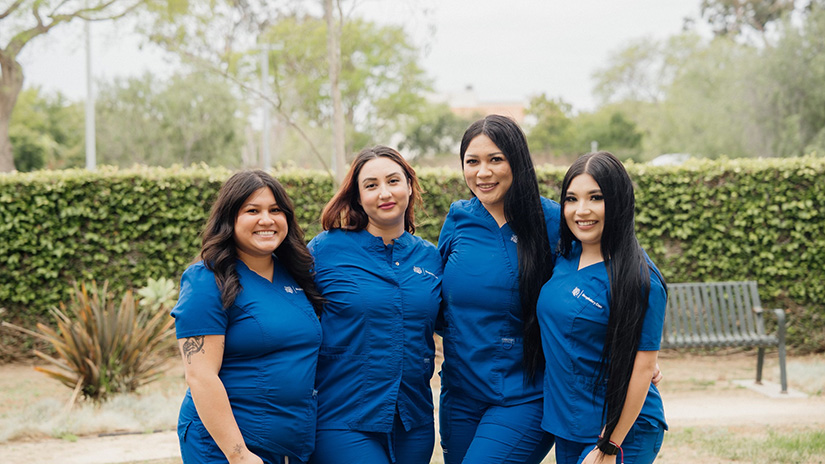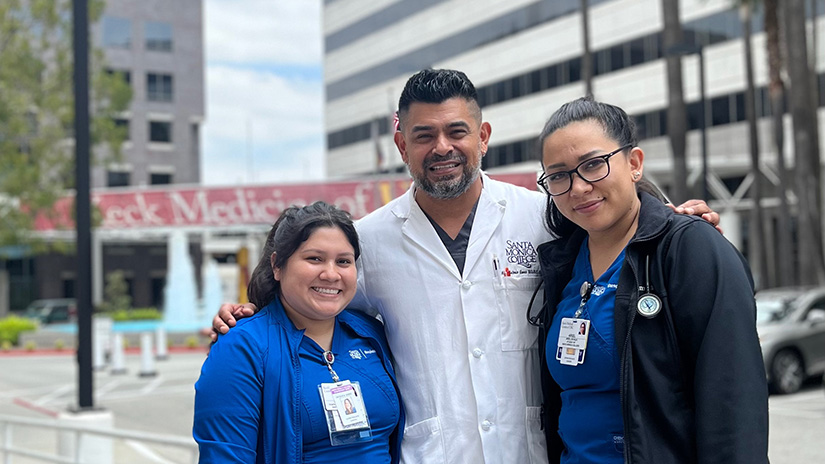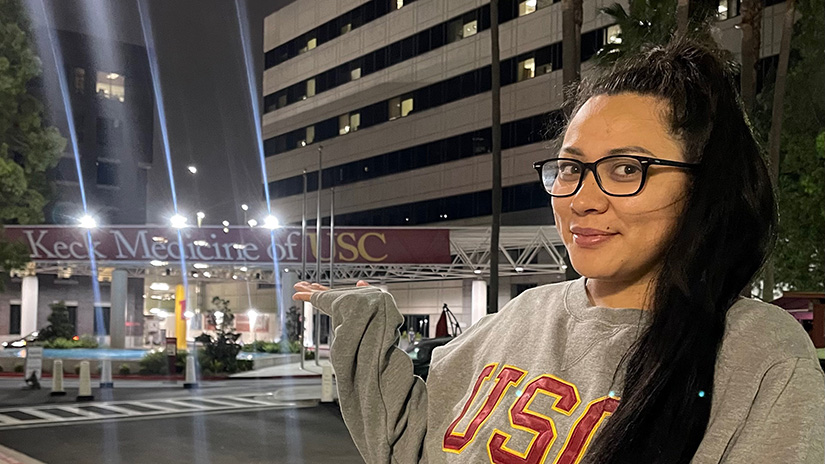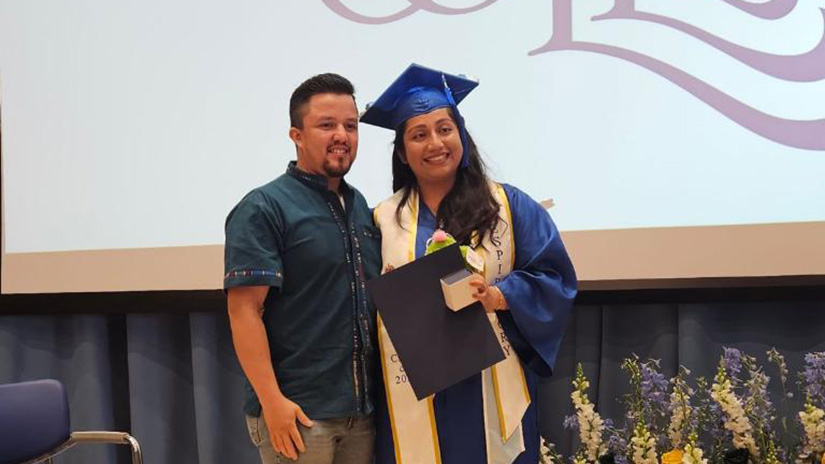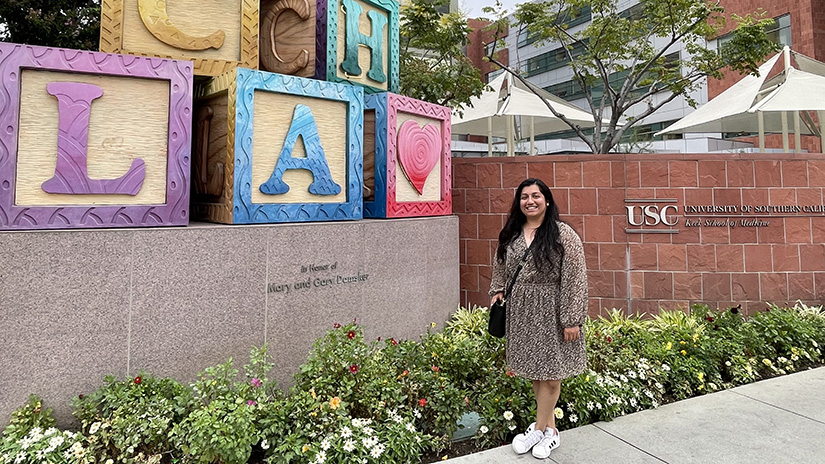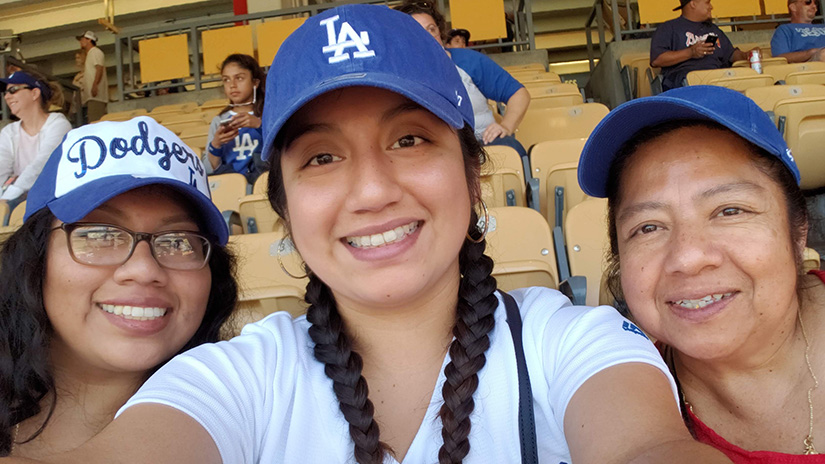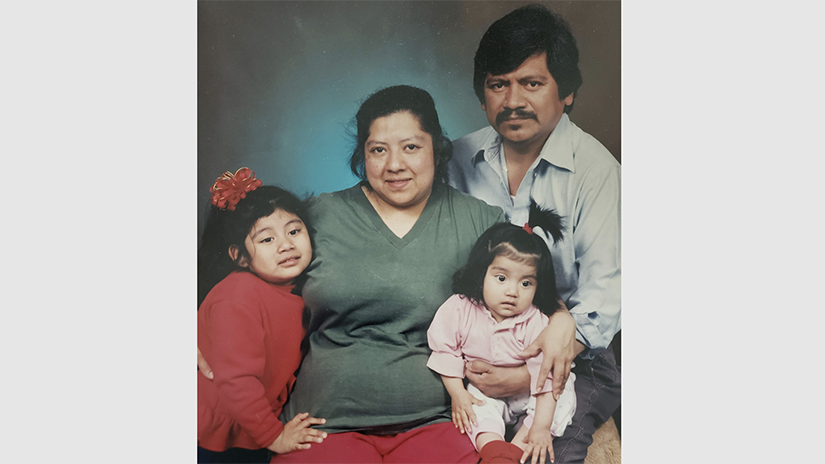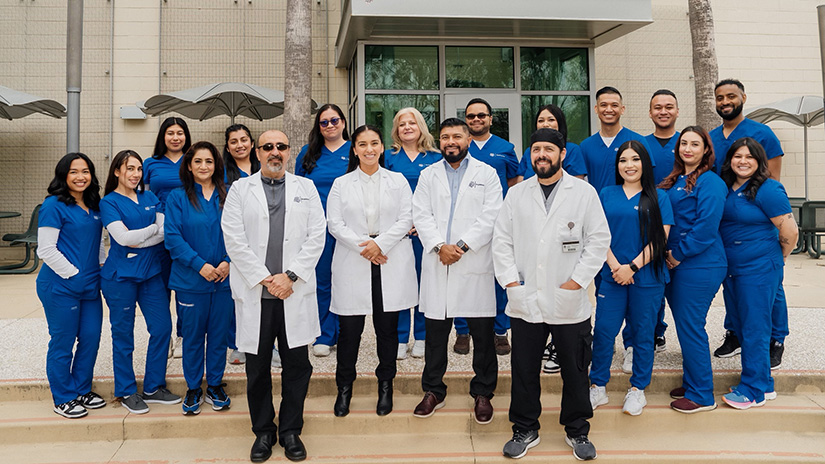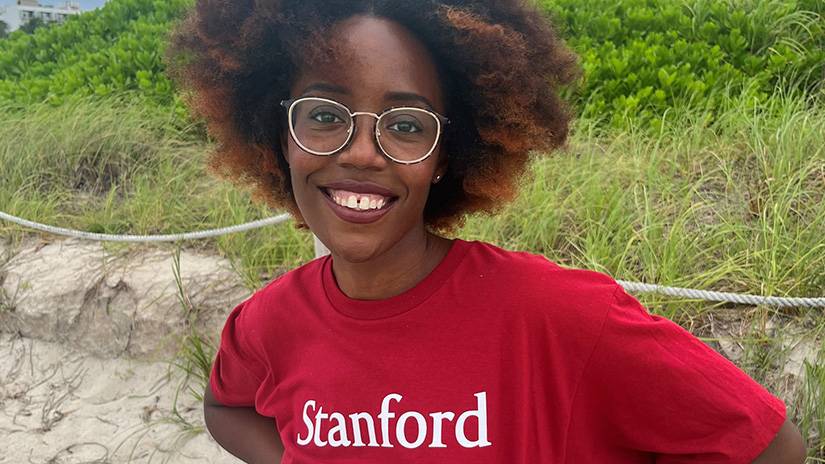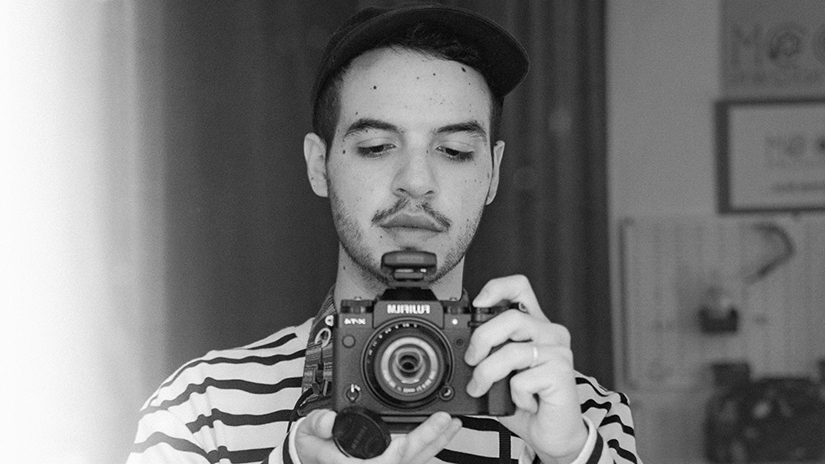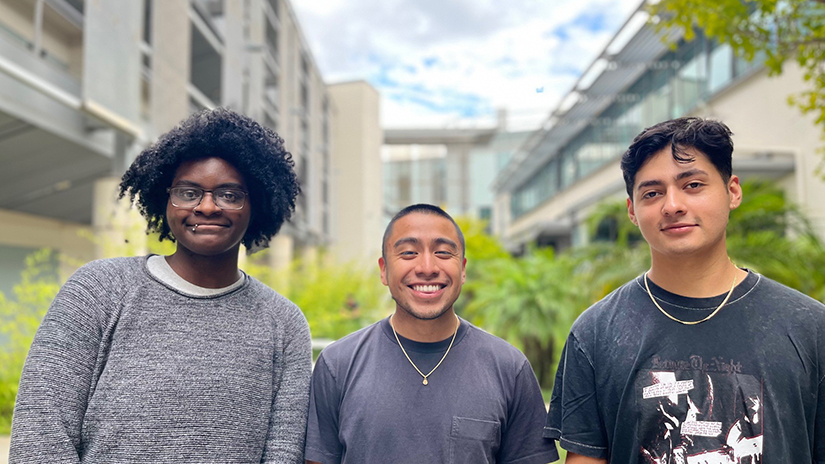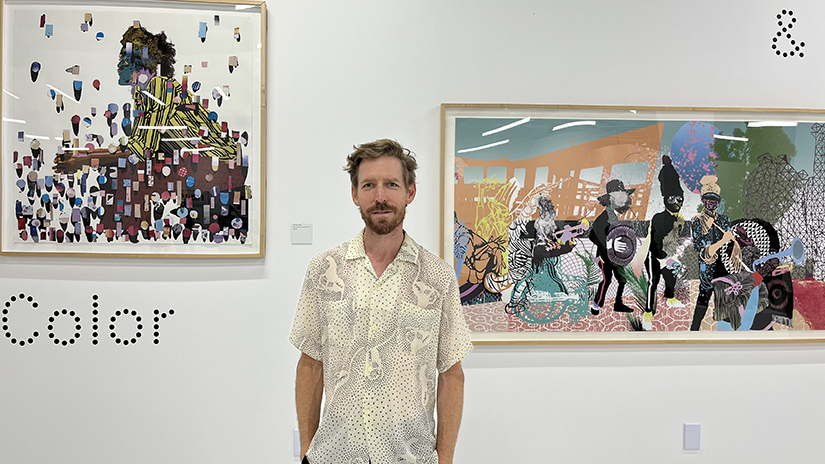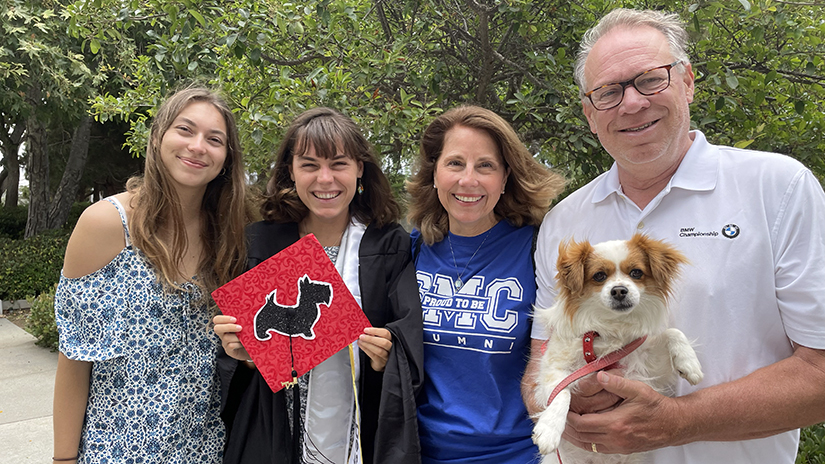
In 2014, Juan Mestas was admitted to the hospital with what his family assumed was a bad flu. It turned
out to be a deadly case of pneumonia.
The 62-year-old restaurant cook needed to be intubated. He later developed acute respiratory
distress syndrome, or ARDS—a serious complication where fluid builds up inside the
lung’s tiny air sacs, causing low blood-oxygen.
Watching the respiratory therapists (RTs) at work, Juan’s 19-year-old daughter, Jasmin, was engrossed. “They involved me in my father’s care. Whenever I would ask questions,
they’d explain it to me,” she recalls. As his condition deteriorated, Juan required
a tracheotomy. Tragically, after a month of acute intervention, he succumbed to his
intractable disease.
“After my father passed, I knew I wanted a career in respiratory care,” Jasmin says.
It took nearly 10 years, but she achieved her goal. Jasmin, now 29, graduated with
the first cohort of SMC’s new Respiratory Care Program in June. So is Ariel Zavala, and 12 other newly minted RTs who joined the profession this summer.
*
In existence since 1969, SMC’s RT program only became fully independent in 2021. Created
in conjunction with UCLA’s now-defunct respiratory therapy department, the partial program later dovetailed
with East Los Angeles College’s well-established associate degree program. “It was a great partnership for 20-plus
years,” says program director Salvador Santana, of the former ELAC-SMC collaboration. “I myself went through it, and we’ve graduated many hundreds of students.”
But recent changes to accreditation requirements in respiratory care education demanded
a parting of ways. Under the old format, students took only their first year of coursework
in Santa Monica. Now a full two-year program is based at SMC. It is the only program serving the westside, and one of just four
in the region.
Demand for respiratory therapists has never been higher, as the COVID pandemic illustrated.
Starting salary for is $87,000, and jobs are plentiful.
Jasmin had two job offers before she even passed her licensing exam.
*
The child of Mexican immigrants, Jasmin was born and raised in Koreatown. At the time of her father’s death in 2014, she was already taking general education
courses at SMC while working as a hostess at the Stinking Rose in Beverly Hills.
Juan had been the family’s main breadwinner. With him gone, Jasmin shouldered financial
responsibility for her grieving mother and older sister, then a student at UC Davis.
Jasmin took on a second restaurant job and moonlighted as an instructor at a Pasadena swim academy. As the years passed, she was promoted to bartender, then server at
the Stinking Rose, all the while taking one course per semester at SMC. She methodically
completed her general studies AA in 2020, and with enough money squirreled away to
finally quit her jobs, she devoted herself full time to becoming an RT.
Jasmin completed her AS in respiratory care with honors this past June, and obtained
her California RRT (registered respiratory therapist) license over the summer.
In late October, she begins a yearlong residency program at Children’s Hospital Los Angeles working under veteran RT preceptors while onboarding into the elite hospital’s neonatal
and pediatric intensive care units.
*
Ariel Zavala, 24, also graduated with honors in the first cohort of SMC’s Respiratory Care Program.
Born in Orange County, she and her two brothers grew up in Fresno. Raised by an aunt, they traveled regularly to Mexico, where their mother, a single
parent, still resides.
Ariel had been attracted to healthcare since early childhood. She earned a certified
nursing assistant credential at Ventura College in 2019 “just to get my feet wet,” she says. A job at a skilled nursing facility
in Thousand Oaks brought her to the Southland just before the pandemic landed.
“All my patients were getting COVID,” she recalls. “We were extremely short staffed.
I was working double shifts. We had no masks.” When RTs started arriving at the facility
to administer breathing treatments to sick residents, Ariel’s interest was piqued.
“I always liked heart anatomy,” she says, “and once I saw the respiratory therapists
at work, it was like: ‘Oh, this is what I want to do.’”
Today, Ariel’s skillset includes such techniques as bronchial hygiene, hyperinflation,
humidity and aerosol therapies; therapeutic gas administration; airway management;
invasive and non-invasive mechanical ventilation initiation and monitoring; transcutaneous
monitoring; and end-tidal carbon dioxide (EtCO2) monitoring.
In late September, she started her new RT position at Keck Hospital of USC.
*
Jasmin and Ariel are among SMC’s top RT graduates, and they aren’t alone. Several
others from the initial cohort went straight into acute care facilities. To land jobs
at top teaching hospitals like USC, UCLA or CHLA is “a testament to the strength of
our program,” Salvador explains. “You have to be a really high-quality graduate to
work at those places.”
Jasmin and Ariel attribute much of their success to the personal attention they received
at SMC.
“It wouldn’t be just one or two instructors: we sometimes had three or four instructors
helping us during open lab hours,” Jasmin says.
Ariel is especially grateful to clinical instructor Alex Corea, “one of the best teachers
in the program, who guided me from my first semester to my last.”
The curriculum is tightly packed into a 24-month year-round schedule, including 1,260
hours of clinical rotations at top institutions like Ronald Reagan UCLA Medical Center, Keck Hospital of USC and Cedars-Sinai Medical Center. Ariel tackled the full-time student load while juggling a 40-hour schedule as a
CNA in the psychiatric special-care unit of a Los Angeles skilled nursing facility.
She added weekend shifts to make up for time lost to classes, exams and clinical rotations.
“It was an insane amount of work, but it was all worth it because I got my dream job,”
Ariel says. “I’m just very happy.” Along the way, she acquired a trio of new besties:
cohort-mates Scarlett Lamm, Natalie Gomez and Griselda Ramirez cheered her on through the rough patches and they remain “truly great friends.” Ariel
also leaned on younger brother Kevin Zavala, 22, a medical assistant who postponed his own college education so he could help
her out financially.
Ariel hasn’t slowed down since starting her new job at USC. She continues to study
in her downtime, pursuing a bachelor’s in respiratory care through a fully online
program of Skyline College. She anticipates completing the degree in June 2025.
*
One feature that sets SMC’s respiratory care program apart is its early-and-often
approach to clinical rotations. RT programs typically require 800 to 900 hours on
the hospital floor, but SMC builds in more than 1,200 clinical hours. The increase
is in response to industry feedback Salvador had received while designing the program:
many hospitals reported new hires being ill-equipped to enter the workforce for lack
of time on the wards.
“Our students have by far the most clinical experience,” Salvador says. “We’re also
the only true competency-based program, in terms of the students getting assessed
in the lab and in the clinical setting.” SMC students complete more than 60 competencies,
building up their knowledge gradually. “They go from simple to complex, and can work
in all areas of the hospital. It’s pretty unique. Outside of four-year university
programs, there’s nothing like us right now,” Salvador says.
In addition to being licensed RTs, Ariel and Jasmin are certified through the American Heart Association in basic life support, pediatric advanced life support, neonatal resuscitation, and
advanced cardiovascular life support. Reflecting back on her SMC experience, Jasmin
says: “I really liked the structure—going into clinicals in the first semester connected
all the dots.”
Ariel agrees: “Being exposed to the floors right away—nobody does that! I feel like
that puts us ahead of other colleges.”
* * *
SMC in Focus Volume IX, Issue 5




